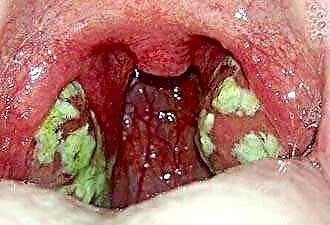Otoplasty of the ears - plastic surgery to eliminate the protrusion and asymmetry of the auricles. During surgery, the surgeon models the required shape of the ear cartilage, partially or completely reconstructing the shell. Ear surgery is practically painless, so it can be performed on children over 6 years of age.
In 90% of cases, patients with underdevelopment of the antihelix and excessive depth of the shell come to a plastic surgeon. In each case, an individual technique is selected to eliminate congenital defects. Surgical ear correction is in great demand, which is due to the high efficiency of the procedure and the ability to correct deformities of almost any complexity.
General information

Corrective surgery (otoplasty) is one of the reconstructive and aesthetic surgeries performed to correct abnormalities in the structure of the ear cartilage. With the help of surgical intervention, it is possible to correct the earlobe, the shape of the shell, lop-eared, etc. As a rule, after the rehabilitation period, there are no visible traces and cosmetic defects on the operated area of the body.
According to experts, the correction of the auricles should take place at an early age, starting from 6 years. Thus, it is possible to prevent the development of psychological complexes in a child that affect his psychoemotional state and behavioral characteristics. Before the operation, young children are given general anesthesia, and adults - local anesthesia.
Important! It is impossible to carry out surgery to eliminate defects in the auricle in children under 6 years of age. Until this age, the active development of cartilage tissue occurs, so any surgical manipulations can cause complications.
Types of otoplasty
Otoplasty - what is it? Otoplasty is usually called surgery, during which defects in the structure of the cartilage in the outer ear are eliminated. During the operation, a specialist can affect not only cartilage, but also soft tissues. This helps to eliminate not only the protrusion of the shells, but also to correct its shape.
Conditionally plastic surgery on the ears is divided into two types:
 aesthetic - corrective surgery to correct the configuration of the concha or earlobe;
aesthetic - corrective surgery to correct the configuration of the concha or earlobe;- reconstructive - partial or complete creation of the ear cartilage in its absence.
It is worth noting that surgical manipulations are carried out only in the area of the outer ear, therefore, they do not in any way affect the functioning of the hearing organ itself.
When carrying out the procedure, the specialist must take into account 4 nuances:
- surgical modifications should not affect the volume behind the ear;
- the maximum distance between the sink in the upper part and the head should be 1 cm, and in the lower part - 2 cm;
- the key task of the operation is to eliminate protrusion in the upper third of the ear cartilage;
- in the process of correcting the antihelix should turn out with a clearly defined contour and a smooth edge.
In most cases, the defects lie in the asymmetry of the cartilage located in the central part of the shell (antihelix). The task of the surgeon is to ensure that, after surgery, the antihelix does not cover the cartilaginous rim located along the edge of the outer ear (curl).
Indications
What is otoplasty? In fact, this is a cosmetic operation, during which exclusively aesthetic imperfections that affect the psychoemotional state of a person are eliminated. Modern technologies have made it possible to minimize the risks during the operation for preschool children. Correction of the shape of the ears will allow to avoid psychological pressure on the child from peers, which can cause mental deviations, complexes, phobias, etc.
When is ear plastic surgery advisable? Direct indications for aesthetic correction are:
- protrusion;
- asymmetry of the ears;
- shell injuries;
- absence of an external ear (anotia);
- large ears (makrotia);
- deformation of the ear cartilage;
- no curl;
- mechanical rupture of tissues.

In most cases, ear surgery is performed when there are deformities in the cartilage tissue, which can be congenital or acquired.
It should be noted that plastic surgery is carried out after passing a preliminary examination and passing all the necessary tests. It is impossible to carry out aesthetic and reconstructive surgical procedures for:
- somatic diseases;
- heart disease;
- cancer;
- blood diseases;
- diabetes mellitus;
- acute inflammation in the ENT organs;
- incoagulability of blood.
Important! It is impossible to carry out otoplasty for women during menstruation, which is due to the reduced resistance of the body during this period.
Preoperative preparation
Ear plastic surgery requires careful preparation, including all necessary examinations and adherence to a special diet. The patient undergoes a series of tests, during which the presence of pathologies that can affect the course of the operation or cause complications is determined. These include:
- fluorography;
- biochemical analysis of blood and urine;
- blood test for HIV, syphilis, hepatitis;
- coagulogram.
If the patient is taking medications, during the preparatory phase, he should inform the surgeon about this. In most cases, the use of drugs of systemic action has to be abandoned, due to their negative effect on the composition of the blood. This can affect the duration of the rehabilitation period and the course of the operating process.
About 1 week before the ear surgery, the patient is prescribed a special diet. It involves the use of only fortified foods with a minimum amount of simple carbohydrates. On the day of surgery, experts advise against eating and drinking.
Methods of conducting
When choosing the appropriate method of surgery, the specialist is guided by the medical indications, the patient's history and the duration of the surgical process. In most cases, surgeons use one of three main methods to correct cosmetic defects:
- Mustard's method - excision of excess skin in the behind-the-ear region, accompanied by the imposition of sutures that correct the shape and degree of protrusion of the ear;
- Furnas method - the formation of seams from modeling, i.e. non-absorbable materials capable of medially correcting the ear cartilage;
 cartilage formation - mechanical processing of the lateral and medial cartilage with a surgical milling cutter with a diamond attachment.
cartilage formation - mechanical processing of the lateral and medial cartilage with a surgical milling cutter with a diamond attachment.
To correct lop-earedness, the operation is carried out by the method of correcting and modeling the antihelix. For these purposes, a laser device or a radio wave knife can be used. High-tech installations make it possible to change the structure and shape of the cartilaginous tissue, which makes it possible to give the auricle the required configuration.
Cosmetic ear surgery lasts no more than 2 hours, even in the presence of serious anomalies and aesthetic defects. Before the procedure, the specialist discusses with the patient the most appropriate technique for correcting existing defects. Only after agreeing on all the nuances and discussing the possible consequences, the surgeon proceeds to direct modeling and elimination of cosmetic defects in the outer ear.
Operation progress
There are at least 2000 different techniques that modern otoplasty uses. How is the operation going? During surgical procedures, the surgeon makes a deep incision behind the ear. This allows you to hide the marks after surgery and minimize the amount of visible scars and scars. Below are the most commonly used variations of surgery:
- elimination of protrusion: the skin is peeled off from the back surface of the ear cartilage, after which the surgeon excises a small part of the muscle layer. The cartilage plate is then attached to the periosteum with a non-absorbable suture. Thus, it is possible to reduce the angle between the outer ear and the head, which leads to the elimination of protrusion;
- antihelix correction: a narrow strip of skin is removed behind the outer ear, after which special silk threads are passed through the cartilaginous tissue. During surgery, they are pulled together to give the antihelix the necessary configuration;
- the creation of a bulge in the antihelix: after excision of the skin behind the outer ear, the specialist makes a large number of notches on the cartilage with the help of a rasp. Localized thinning of the cartilaginous tissue leads to the formation of the bend necessary for the formation of the bulge of the antihelix.
How to shrink your ears? To correct the size, the outer ear is marked by marking the tissue to be excised. After that, the anesthesiologist does anesthesia, after which the surgeon removes and moves fragments of cartilage and soft tissue. The ear reduction surgery does not take more than 1.5 hours. However, during rehabilitation, several important rules must be followed to ensure that there are no complications and disorders in the newly formed ear.
Rehabilitation
 Recovery and rehabilitation after otoplasty often takes place on an outpatient basis, i.e. the patient can go home a few hours after the surgery. For preventive purposes, the doctor on duty monitors the patient's condition for 3-4 hours to make sure that there are no side effects from anesthesia. The entire rehabilitation period takes approximately two months, during which the patient must undergo a visual examination by the attending physician.
Recovery and rehabilitation after otoplasty often takes place on an outpatient basis, i.e. the patient can go home a few hours after the surgery. For preventive purposes, the doctor on duty monitors the patient's condition for 3-4 hours to make sure that there are no side effects from anesthesia. The entire rehabilitation period takes approximately two months, during which the patient must undergo a visual examination by the attending physician.
Rehabilitation period after otoplasty:
- sutures are removed 7-8 days after surgery;
- within 14 days, the patient should not lift weights;
- puffiness after ear reduction begins to subside on the 4th day;
- For 6-7 weeks, a special pressure bandage is put on the operated ear at night.
How long to wear a bandage after otoplasty? In most cases, the post-otoplasty compression bandage is worn for two weeks. At the same time, experts strongly do not recommend removing it for at least a minute, as this can lead to divergence of the seams. You can return to your usual rhythm of life after a two-month period of rehabilitation.
Possible consequences
Can complications arise after otoplasty? As with any type of surgery, complications may arise after ear surgery. The main ones include:
- swelling of soft tissues: in the first few days after the operation, severe swelling of the tissues does not allow to objectively interpret the results of the surgical intervention;
- hematomas: most often, limited subcutaneous hemorrhage occurs in smoking patients, which is due to a sharp change in the diameter of the vessels during smoking;
- keloid scars: appear when there is suppuration in the area of the surgical suture, which in 90% of cases occurs in people with weakened immunity.
Laser otoplasty is much less likely to cause complications due to the use of a laser knife that does not injure soft and cartilaginous tissues. After the procedure, the auricle in most cases has an anatomically correct shape without visible scars and adhesions. Modern technologies have made it possible to reduce the negative consequences of otoplasty to a minimum by reducing tissue trauma, which is inevitable when using a metal scalpel.

 aesthetic - corrective surgery to correct the configuration of the concha or earlobe;
aesthetic - corrective surgery to correct the configuration of the concha or earlobe; cartilage formation - mechanical processing of the lateral and medial cartilage with a surgical milling cutter with a diamond attachment.
cartilage formation - mechanical processing of the lateral and medial cartilage with a surgical milling cutter with a diamond attachment.

